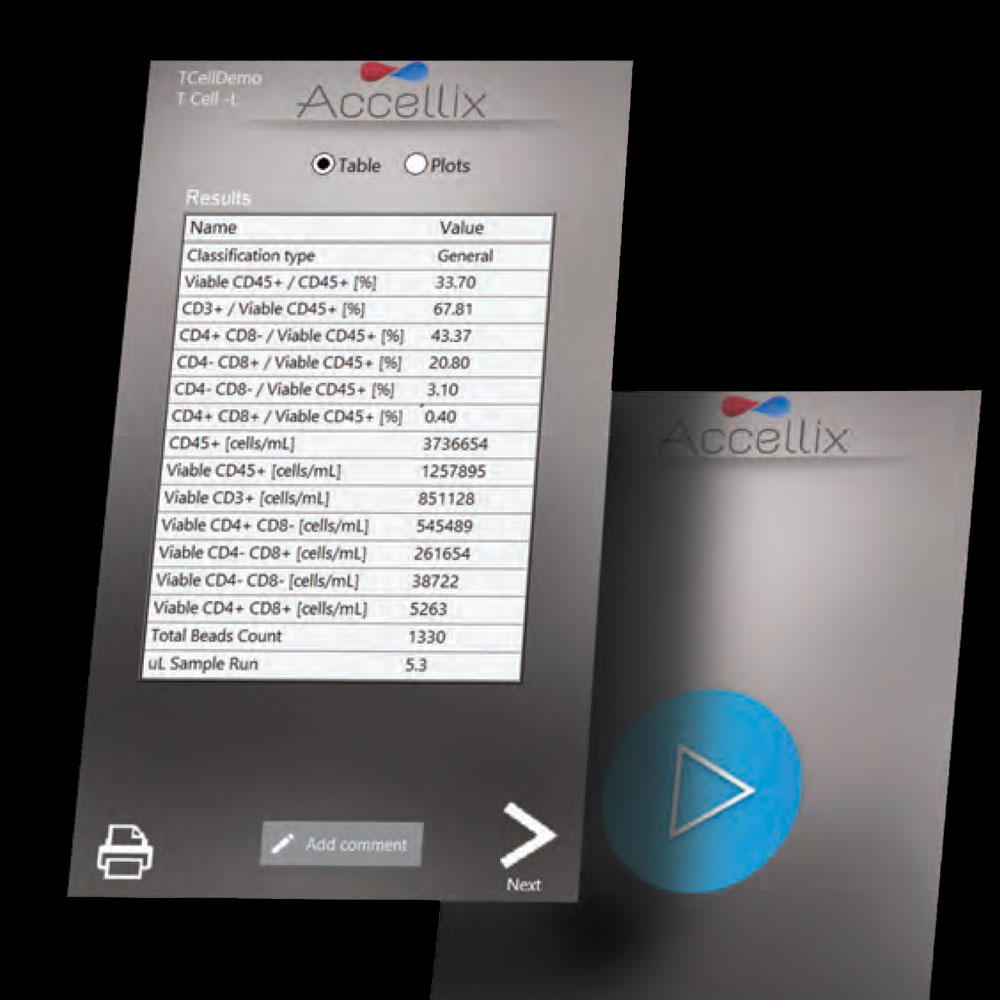Cell Phenotyping Platform for Automated QC Analytics
The Accellix platform has been adopted by leading immunotherapy companies as it enables standardized and streamlined cytometry of cell therapy drug products.

The Accellix platform has been adopted by leading immunotherapy companies as it enables standardized and streamlined cytometry of cell therapy drug products.






The Accellix Automated Cell Phenotyping Platform is an automated bench-top flow cytometer that leverages a microfluidic cartridge with ambient-stable reagents.

The Accellix Software is a simple user interface combined with algorithm based autoanalysis software tools which compute a test result at the end of the run. Complete automated analysis increases reproducibility, eliminates subjectivity and simplifies system operation. The Accellix algorithm based autoanalysis software is an algorithm-based analysis tool that automates flow cytometry data analysis using a dynamic gating strategy. It takes in flow cytometry data generated on the Accellix Platform, automatically defines cell subsets, and reports cell population frequencies to users on-screen.

Flow cytometry is a powerful analytical technique for analyzing and quantifying cellular populations based on their optical properties and involves passing cells or particles in a fluid suspension through a laser beam, exciting the cells to emit fluorescence. The emitted fluorescence is then detected and measured by a series of detectors and analyzed by software.
The cells are labeled with fluorescent probes that selectively bind to specific cellular components, allowing researchers to distinguish and quantify different types of cells or particles. The technique can be used to measure various characteristics of cells.
Flow cytometry is generally used in research and clinical settings for a wide range of applications such as immunology, cancer research and drug discovery, and is particularly useful for analyzing large populations of cells quickly and accurately, as well as for identifying rare cells within a sample.
In traditional flow cytometry, fluorochromes are excited by a single laser source, and their emission spectra are detected by a limited number of detectors, which limits the number of parameters that can be analyzed simultaneously. Spectral flow cytometry overcomes this limitation by using lasers and detectors, which can measure a wider range of fluorescence spectra, and provides more precise and accurate measurements of fluorescence intensity.
Spectral flow cytometry has several advantages over traditional flow cytometry, including improved resolution and sensitivity, higher spectral resolution, and increased multiplexing capabilities. Spectral cytometers will unmix each spectrum to provide a pure signal for each fluorochrome. A conventional or traditional flow cytometer, while also utilizing lasers as the light source, requires multiple filters and detectors. These filter/detector combinations have a narrow range of detection, which results in a high degree of spillover and therefore use compensation to correct this spillover.
